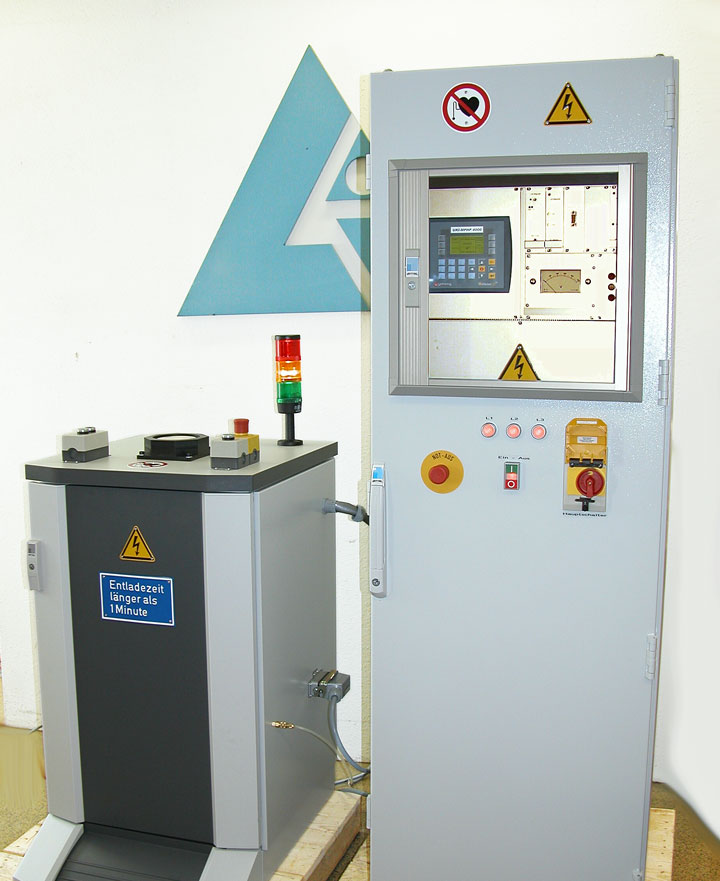Magnetizing
List-Magnetik has already successfully designed hundreds of magnetizing systems
Magnetizable materials
Magnetizable substances consist of tiny areas, which behave like small magnets, known as, elementary magnets. If these elementary magnets are disorganized, their action is neutralized outside the body, and therefore, the total body is no longer a "magnet", because it becomes non-magnetic. However, if the majority of the elementary magnets are aligned the same, the body acts as a magnet. In the case of permanent-magnetic material, strong external magnetic fields are required for the orientation of the elementary magnets.
Ferromagnetic materials
Ferromagnetic or "soft magnetic" materials are normally non-magnetic, but they can be magnetized. However, they quickly lose their magnetic effect by shaking, and with a rise in temperature. The most well-known ferromagnetic materials are iron, nickel and cobalt.
Permanent magnets / permanent magnets
Permanent magnets can also retain their magnetic properties over a long period of time without the effect of an external magnetic field. Today, metallic alloys made of iron, nickel and aluminum with additions of cobalt, manganese and copper, or also ceramic oxide materials (barium oxide, iron oxide) are used in production. Particularly strong magnets are produced in the sintering process from the so-called "rare earths", such as samarium-cobalt or neodymium-iron-boron. They are used in compasses as a magnetic needle, in electric motors, electrical measuring instruments, loudspeakers and headphones, as well as in devices such as printer heads, disk drives, magnet-inductive sensors, to name but a few.
Increasingly high demands on magnetizers
More significantly in the automotive industry, there is a growing demand in respect of the requirements of permanent-magnet-activated electric motors, in ever smaller sizes, with ever stronger torques. Thus, the ferrite or rare earth stators need an increasingly higher magnetization. In order to achieve optimum magnetization for the required magnetizing coils, while simultaneously producing low noise motors, a perfect design is absolutely indispensable.
Customized magnetizing systems for various industrial and manufacturing branches
Several decades have passed since List-Magnetik constructed the first magnetizing yokes to the current capacitor discharge magnetizing devices. Over that time, we have realized many successful projects and, in particular, we have designed and manufactured customer-specific magnetizing systems, mainly for the electromotor manufacture of the automotive supply industry. Furthermore, these magnetizing equipment systems have a long service life despite low cycle times, and often operating 24/7, and are used worldwide. Our expertise in planning, simulation, electrotechnical production and the construction of the magnetizing coils are recognized by large organizations.

Our magnetizers
The UKI-MPLC magnetizers operate conforming to the capacitor discharge method with integrated PLC control with graphical control terminal. They are used in the multi-pole magnetization of all types of permanent magnet systems, and, more particularly, for the magnetizing of rare earth magnetic materials. These devices are equipped with all the necessary safety components and also with the appropriate signaling signals for use in the field of line production in accordance with the quality standard (DIN EN 13849-1).
In combination with our impulse transformers IT-1 and IT-2, impulse currents of up to 100 kA are possible. This consequently results in optimal saturation magnetization of multipolar rare earth magnets with a very narrow neutral pole change zone, and at the same time, very high cycle times.
The devices are available with the following functions:
- Individually adjusted to the motor geometry magnetizing coils
- Magnetic flux measuring device (Fluxmeter FL-4)
- Integrated current monitoring to control magnetic field strength
- Integrated temperature monitoring of the connected magnetizing device
- Integrated Profibus interface
We design each magnetizer according to its individual application.
Let us know your specific requirements, and we will be happy to send you an offer. Please include the following data:
- Magnet (magnet system) geometry
- Magnetic material or label
- Magnetization type / number of poles
- Cycle time in production mode
- Sketch or drawing of the magnet system





